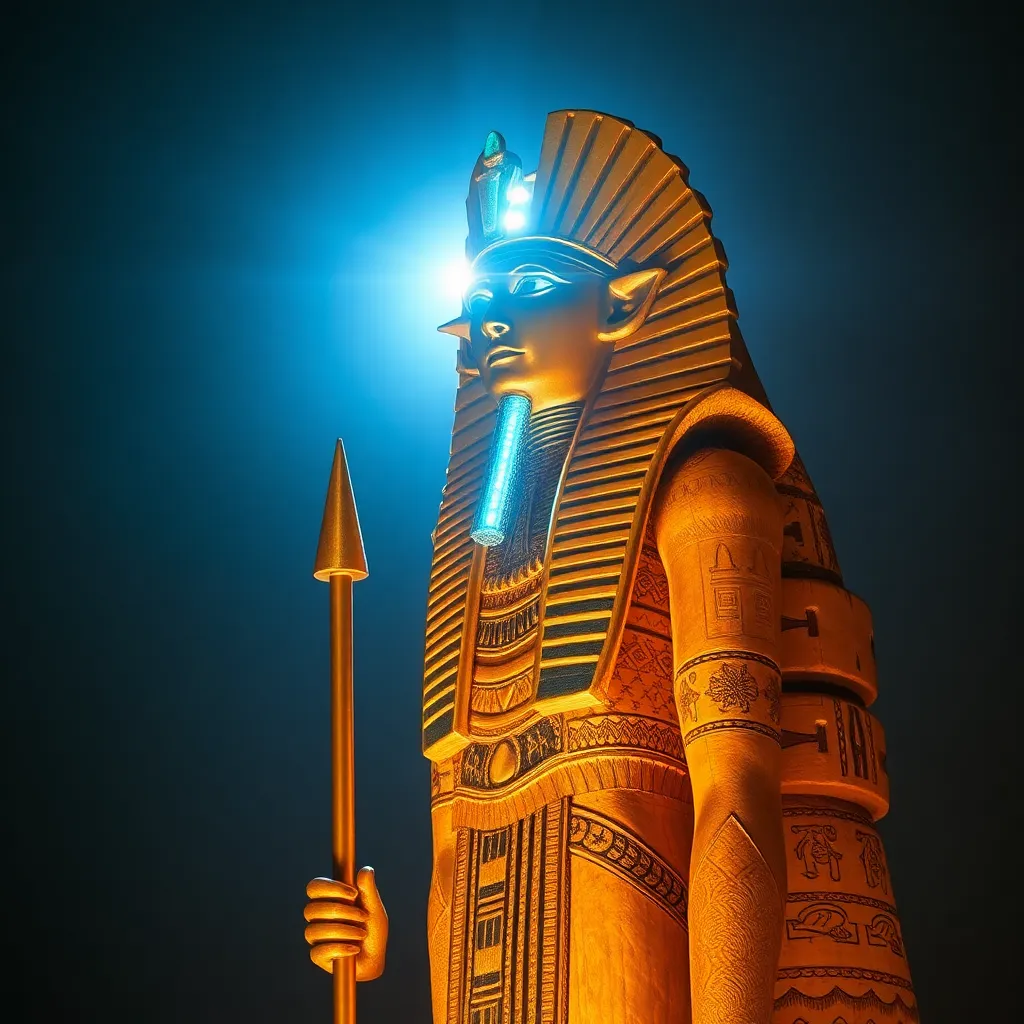The Aten and the Concept of Divine Light in Worship
I. Introduction
The Aten is a significant deity in ancient Egyptian religion, often associated with the sun disc and viewed as a symbol of divine light. This concept of divine light transcends cultures and religions, representing purity, truth, and enlightenment. Understanding the Aten provides crucial insights into the nature of worship in ancient Egypt and the unique theological perspectives that emerged during its history.
The study of the Aten is vital not only for its historical significance but also for its broader implications in religious practices. The interplay between light and divinity has been a recurring theme in various spiritual traditions, marking a universal quest for connection with the divine.
II. Historical Context of the Aten
The origins of the Aten can be traced back to earlier sun deities in Egyptian mythology, such as Ra. However, it was during the reign of Pharaoh Akhenaten (circa 1353-1336 BCE) that Aten worship gained prominence. Akhenaten’s radical religious reforms led to the establishment of the Aten as the central figure of worship in a shift towards monotheism, diverging from the traditional polytheistic practices that characterized Egyptian religion.
This shift to Aten worship not only represented a change in religious practices but also echoed a broader cultural transformation. The Aten was depicted as a singular source of life and light, contrasting sharply with the pantheon of gods that had previously dominated the spiritual landscape. This monotheistic approach positioned the Aten as a unique symbol of divine light in a society that revered multiple deities.
III. Symbolism of Light in Ancient Egypt
In Egyptian cosmology, light held profound significance. It was associated with creation, life, and the divine order of the universe. Light was often seen as a manifestation of the gods, illuminating the world and guiding the living.
The relationship between the sun and creation myths is particularly noteworthy. For instance, the daily journey of the sun across the sky was interpreted as a cycle of death and rebirth, symbolizing the eternal nature of life. This led to light being viewed as a metaphor for divinity and purity, emphasizing the sacredness of illumination.
IV. The Aten as a Representation of Divine Light
The Aten was artistically depicted in various forms throughout ancient Egypt, primarily as a sun disc radiating rays of light. These artistic representations often included hands extending from the disc, bestowing life and blessings upon the pharaoh and the people.
Sunlight played a crucial role in rituals and ceremonies dedicated to the Aten. Temples built in honor of the Aten were strategically designed to maximize the effect of sunlight, symbolizing the deity’s presence and influence. This architectural innovation underscored the importance of light in the worship of the Aten.
The Aten’s association with light also created a distinct contrast with traditional deities often linked to darkness, chaos, and the underworld. While many gods in the Egyptian pantheon represented aspects of death and the afterlife, the Aten embodied life, growth, and renewal, reinforcing the sacred nature of light.
V. Worship Practices Associated with the Aten
Worship practices surrounding the Aten were characterized by unique architectural and ritual innovations. The most notable structures dedicated to the Aten were open-air temples that allowed direct sunlight to illuminate the worshippers and rituals.
- Temples and Architectural Innovations: The temples of the Aten, such as those at Amarna, were designed to be open to the sky, symbolizing the direct connection between the worshippers and the divine light of the Aten.
- Rituals and Offerings: Unique rituals included offerings of flowers, incense, and food laid out in the sunlight, emphasizing the importance of light in the worship process.
- The Role of the Pharaoh: The pharaoh acted as the primary mediator between the Aten and the people, performing rituals that reinforced his divine connection to the deity and his role as the earthly embodiment of divine light.
VI. Philosophical Implications of Divine Light in Worship
Theological interpretations of the Aten signify a source of life and sustenance, reflecting on the essential role of light in the natural world. This understanding influenced moral and ethical practices, as the presence of divine light was often associated with goodness, truth, and righteousness.
Comparisons with other religious traditions reveal similar themes emphasizing light. For instance, in Zoroastrianism, Ahura Mazda symbolizes wisdom and light, while in Christianity, Jesus is often referred to as the “light of the world.” These parallels underscore a shared human aspiration towards enlightenment and the divine.
VII. Decline of Aten Worship and Its Legacy
Following Akhenaten’s reign, the worship of the Aten gradually faded as traditional polytheistic practices were reinstated. The return to a pluralistic religious framework marked a significant shift in Egyptian spirituality, leading to the eventual abandonment of Aten worship.
Despite its decline, the legacy of Aten worship continued to influence subsequent religious thought. The concepts of divine light and the relationship between the sun and creation persisted in various cultural narratives, shaping theological discussions in later periods.
In modern times, interpretations of the Aten and divine light have found resonance in contemporary spirituality, where the quest for enlightenment remains a powerful theme across various belief systems.
VIII. Conclusion
The Aten represents a pivotal moment in ancient Egyptian worship, embodying the profound concept of divine light that transcends time and culture. Through its unique practices and theological implications, Aten worship offers valuable insights into the evolution of religious concepts and the enduring significance of light in spiritual practices.
Understanding the Aten not only enriches our knowledge of ancient Egyptian religion but also enhances our appreciation for the universal pursuit of connection with the divine. The enduring legacy of light as a symbol of purity, truth, and enlightenment continues to inspire spiritual seekers across the globe.




